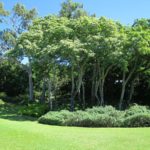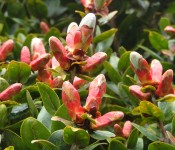
Welcome to Hawaiʻi Forest Tracks
Welcome to Hawai’i Forest Tracks, providing current and historic information about Hawaii’s forests. Our aim is to bring you a broad range of news pertaining to Hawaii’s forests and forest industries. From historic information, to industry, to the environments and the people that help make Hawaii’s forests and forest industry grow–we’re tracking national and international information for our readers.
E Komo Mai–Welcome to Hawai’i Forest Tracks! Read more
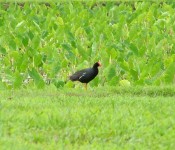
Helpful Hawaiʻi Resources
Hawai’i Forest Links will keep you posted on the historic background, latest news and current events about Hawaii’s forests. Also, we are providing links to other important sites and places that you can explore for research and getting an up-close look at some of Hawaii’s forest resources and a big picture, statewide look at Hawaii’s forest industry.
We welcome your input as well in keeping people informed about statewide projects, big and small–continuing and growing the tradition of Hawaii’s forest industry.
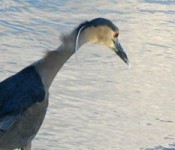
Forest Ecosystem Services
“Ecosystem Services are commonly defined as benefits people obtain from ecosystems. The Millennium Ecosystem Assessment – a four-year United Nations assessment of the condition and trends of the world’s ecosystems – categorizes ecosystem services as:
- Provisioning Services or the provision of food, fresh water, fuel, fiber, and other goods;
- Regulating Services such as climate, water, and disease regulation as well as pollination;
- Supporting Services such as soil formation and nutrient cycling; and
- Cultural Services such as educational, aesthetic, and cultural heritage values as well as recreation and tourism.”
This excerpt from the United States Department of Agriculture website explains the broad roles ecosystems play in our lives–Hawaii Forest Tracks takes it one step further by exploring the ecosystems of forests in Hawaii. Join us to discover the many layers of these contributions through historic information, news and feedback.
WaikÅloa Dry Forest Initiative’s 9th Annual Wiliwili Festival:February 8, 2020
Get to know more about Hawaii’s natural history by attending the WaikÅloa Dry Forest Initiative’s 9th Annual Wiliwili Festival on February 8 at the WaikÅloa Stables, Hawaii Island.
This is a free, enjoyable event and features information, activities, workshops, talks and tours of the WaikÅloa Dry Forest Preserve. Information and great learning experiences make for a good outing. Learn more about it on the WaikÅloa Dry Forest Initiative site.
State Department of Land and Natural Resources Seeks Partner for Pu’u Mali Forest Carbon Project-North Slope of Mauna Kea–Hawai’i Island
The State Department of Land and Natural Resources seeks a partner for Pu’u Mali Forest Carbon Project on the north slope of Mauna Kea on Hawai’i Island.
From the DLNR, “The Pu’u Mali Restoration Area (PMRA) is an area of about 5,500 acres which used to be prime forest habitat before being converted into agricultural land. The area was fenced and domestic and feral ungulates were removed. Beginning in 2004, and continuing presently, the DLNR Division of Forestry and Wildlife(DOFAW) has conducted a forest restoration program on the proposed addition to re-forest agricultural grasslands with the purpose to recharging the watershed and providing a long-term habitat for Palila (Loxides bailleui)”.
A video, map and the request for proposals are here.
The Kukui-Hawaii’s State Tree
In 1930, the coconut palm became Hawaii’s official tree and served this role until 1959. On May 1, 1959 the 30th Territorial Legislature of Hawaii approved the Kukui or candlenut tree, Aleurites moluccana, as the state’s official tree. Read more about the Kukui tree’s special place in Hawaiian culture in Jason Moore’s, Maui No Ka ‘Oi Magazine article, The Tree of Light .
Also, see Aleurites moluccana on the College of Tropical Agriculture and Human Resource–Hawaii Forestry Extension site which has a reprint of the USDA Agriculture Handbook No. 679 by Elbert L. Little Jr. and Roger G. Skolmen, 1989
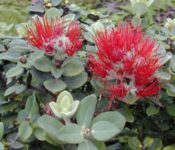
What is Rapid ʻŌhiʻa Death?
The fungus, Ceratocystis, has impacted over 50,000 acres of ʻŌhiÊ»a forest on HawaiÊ»i Island so far. Here’s how you can learn more about it:
- If you’d  like to spend an excellent 35 minutes to learn what Rapid ʻŌhiÊ»a Death (ROD) is, how it’s being detected and about the College of Tropical Agriculture and Human Resources’ (CTAHR) Strategic Response Plan, watch extension forester Dr. J.B. Friday, discuss this subject with the HawaiÊ»i County Council Committee on Agriculture on February 12, 2017 and presented by Big Island Video News.
- Visit CTAHR’s’ page dedicated to Rapid ʻŌhiÊ»a Death to find out where it is, what you can do about it and helpful links, including their Facebook page.
Image Wikimedia USGS
Supporting Kauai’s Forest Song
The Kaua‘i Forest Bird Recovery Project (KFBRP) promotes knowledge, appreciation and conservation of Kauai’s native forest birds. The organization focuses mainly on three federally endangered species: Puaiohi, ‘Akikiki, and ‘Akeke‘e.
To find out more about this collaborative organization visit their site .
If you’re looking for exquisite forest-bird-inspired fashion which keeps you cool, displays beautiful art work by artist, Eleanor Grosch, AND helps keep Kauai’s forest song going visit here.

